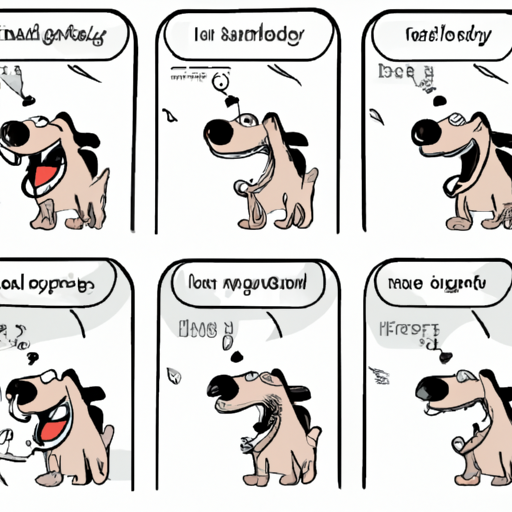Understanding the Basics of Dog Growling
When you’re caring for your furry friend, it’s essential to understand their language. A growl isn’t merely a noise, it’s a form of communication. Your dog might growl when they’re playing, scared, or when their territory is threatened.
- Play Growl: This type of growl occurs when your dog is having a great time. Maybe they’re in the middle of a game of fetch, or they’re playing tug-of-war with their favorite toy.
- Fearful Growl: When your dog is scared, they might growl as a warning. It’s their way of saying, “I’m scared, and I might defend myself if I need to.”
- Territorial Growl: This growl is reserved for when your dog feels their territory is being threatened. It could be a stranger approaching their home, or another dog getting too close to their food.
The Science Behind the Growl
Have you ever wondered what makes your dog growl? It’s actually a complex process that involves several parts of your dog’s body:
- The Larynx: This is your dog’s voice box. When air from the lungs passes over the larynx, it causes the vocal cords to vibrate. This vibration creates the sound of growling.
- The Diaphragm: This muscle helps control the volume of the growl. A stronger push from the diaphragm results in a louder growl.
- The Mouth and Nose: These parts of your dog’s body can change the sound of the growl. For example, a growl might sound different if your dog’s mouth is open versus if it’s closed.
Decoding the Growl
Once you understand the basics and science behind a dog’s growl, it’s time to learn how to decode it. The following table provides a general guide:
| Growl Type | Potential Meaning | Suggested Action |
|---|---|---|
| Play Growl | Your dog is enjoying the activity | Continue play, but ensure it remains friendly |
| Fearful Growl | Your dog is afraid | Remove the source of fear, if possible |
| Territorial Growl | Your dog is defending their space | Respect their space and caution others to do the same |
Responding to the Growl
Understanding your dog’s growl isn’t enough. As a caregiver, you need to know how to respond appropriately. Here are some general tips:
- Never Punish a Growl: Your dog is communicating with you. Even if the message is uncomfortable, it’s important to listen and not punish the messenger.
- Evaluate the Situation: Understanding the context can help you respond appropriately. For example, if your dog is growling because they’re scared, comforting them can help.
- Consult a Professional: If you’re unsure about your dog’s behavior or if the growling becomes aggressive, don’t hesitate to reach out to a professional.
Frequently Asked Questions (FAQs)
Q: Can growling be a sign of pain?
A: Yes, growling can sometimes be a sign of pain. If your dog’s growl is out of character or accompanied by other signs of discomfort, seek veterinary advice.
Q: Is it bad if my dog growls during play?
A: Not necessarily. Many dogs growl as a part of play, but it’s important to watch their body language to ensure it’s friendly play.
Q: What should I do if my dog growls at strangers?
A: It could be a sign of fear or territorial behavior. Consult with a professional trainer or behaviorist to address this behavior.
Remember, each dog is unique, and understanding their language is a journey. It’s a journey filled with lots of love, patience, and a fair bit of doggy drool, but it’s one that’s well worth it.



